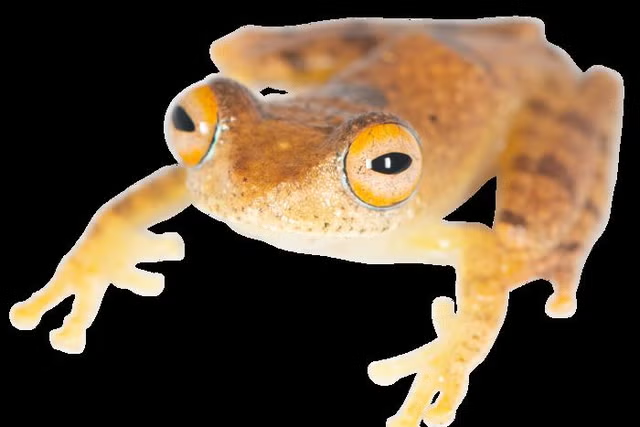Your support helps us to tell the story
Support NowThis election is still a dead heat, according to most polls. In a fight with such wafer-thin margins, we need reporters on the ground talking to the people Trump and Harris are courting. Your support allows us to keep sending journalists to the story.
The Independent is trusted by 27 million Americans from across the entire political spectrum every month. Unlike many other quality news outlets, we choose not to lock you out of our reporting and analysis with paywalls. But quality journalism must still be paid for.
Help us keep bring these critical stories to light. Your support makes all the difference.
Giant pandas Bao Li and Qing Bao will arrive in the nation’s capital this week, flying more than 12,000 miles from China’s Dujiangyan City.
The 3-year-old bears are part of an international partnership between China and the US that has lasted for decades amid strained political tensions. Since the 1990s, China has sent pandas around the globe to be bred, with a pair of adorable cubs born at Germany’s Berlin Zoo just over the summer.
But, a new investigation has found that breeding and conservation efforts have been mired in controversy, as records show China has removed more pandas from the wild than it has freed since 1995, according to The New York Times.
The publication, citing more than 10,000 pages of related documents, found that no cubs born in US or European zoos — zoos can receive cash bonuses for cubs that live to six months — have ever been released back into the wild, as was the original intent of the program. In fact, artificial breeding has killed at least one panda and injured others, according to the report.
“I realized, ‘Oh my God, my job here is to turn the well-being and conservation of pandas into financial gain,’” veterinarian Dr. Kati Loeffler, who worked at a panda breeding center in Chengdu told reporters.

Loeffler accused scientists of using anesthesia on the pandas in excess and without care, one of a host of troubling breeding practicesThe Times report details.
US scientists did not intend to harm pandas when they worked with researchers in China in the late 1990s and early 2000s, the investigation noted. They believed they were saving the species, which is no longer classified as “endangered.”
But according to the report, “aggressive” breeding tactics were used by researchers affiliated with the Smithsonian’s National Zoo and other institutions during these joint efforts in China, despite pushback and discussion regarding the ethics of such techniques. That included electroejaculation, a process where scientists collect sperm with electric probes inserted into the animals’ rectums. Some animals were drugged with ketamine, the Times said, and Chinese scientists also repeatedly inseminated female pandas, the report said.
The Times also alleged that Chinese breeding centers prematurely separated cubs from their mothers, and ignored other recommendations about which pandas are best suited for breeding.
“Sometimes the mothers didn’t have any break at all,” one Chinese former panda keeper, who spoke on the condition of anonymity, said. “They gave birth every year.”
The Chengdu Research Base of Giant Panda Breeding did not immediately respond to The Independent’s request for comment on Tuesday.
The National Zoo said the giant pandas were in transit from the airport to the zoo and would not be able to respond to a request for comment before Wednesday.
The National Zoo told the Times that efforts to release pandas back into the wild are “still developing,” and it was not a metric of the program’s success. The zoo also said it had no records of pandas in China being injured, and that scientists had limited knowledge about panda reproduction in the late 1990s and early 2000s.

On its website, the National Zoo says its goal is to raise $25 million to protect the species and its forest habitats.
The Chengdu center told the paper that it had never used excessive voltage or otherwise harmed animals.
“We have not had any giant pandas suffer health damage or death during surgery due to the use of ketamine,” it said in a statement.
The China Wildlife Conservation Association said Monday that the China-US international cooperation will support the wild protection of giant pandas and the construction of the Giant Panda National Park.
Just how many pandas remain in China’s wild is also in question, the Times reporters said in a separate piece. The World Wildlife foundation said a 2014 census had found 1,864 wild giant pandas, which are native to the mountains and bamboo forests of Central China. The organization partners with the Chinese government to develop bamboo corridors.
“In order to welcome the arrival of the giant pandas, the National Zoo in Washington has renovated the venue, ensured a long-term and stable source of edible bamboo, established a breeding and management team with rich experience, and formulated a complete breeding and management system and technical specifications,” it said.
Disclaimer: The copyright of this article belongs to the original author. Reposting this article is solely for the purpose of information dissemination and does not constitute any investment advice. If there is any infringement, please contact us immediately. We will make corrections or deletions as necessary. Thank you.



